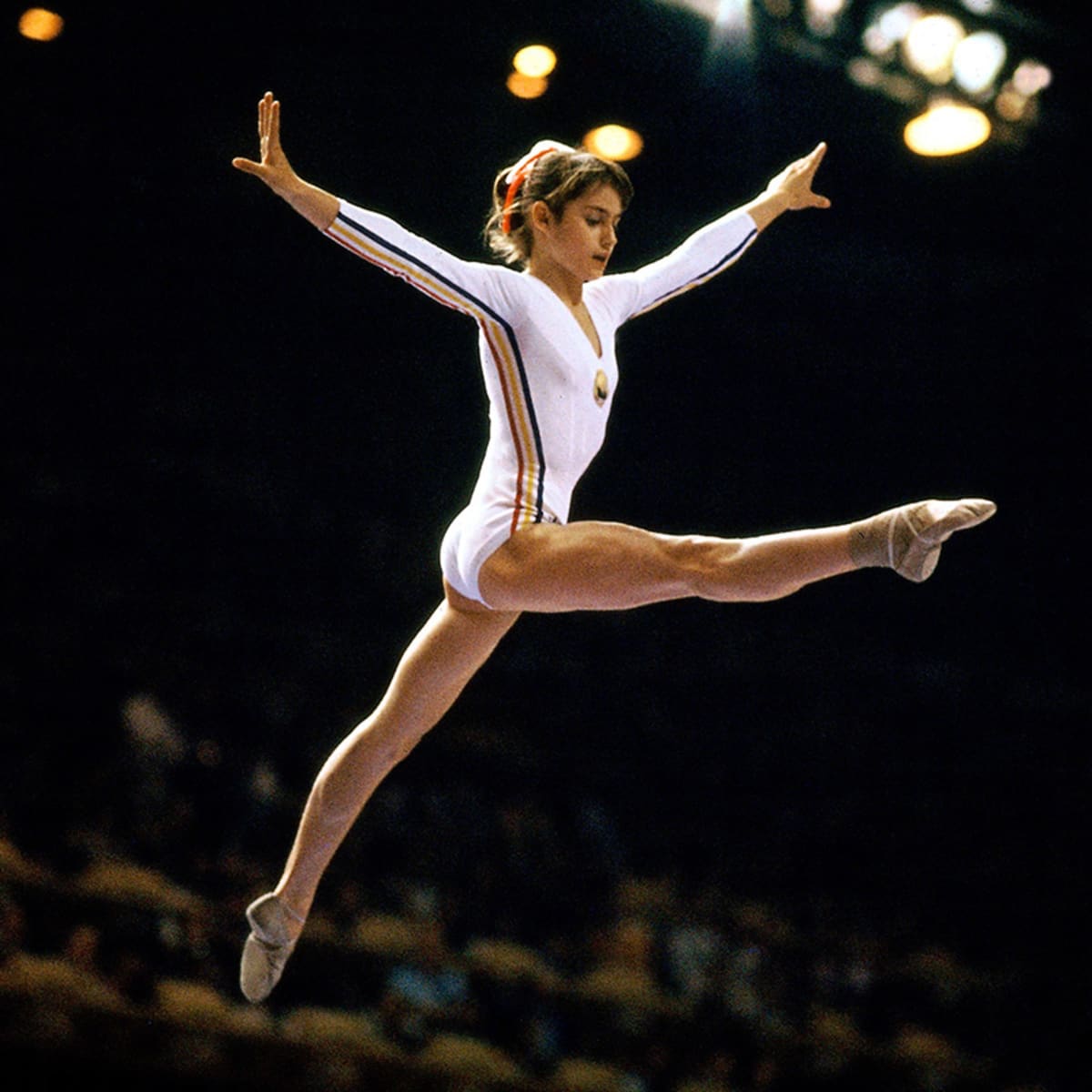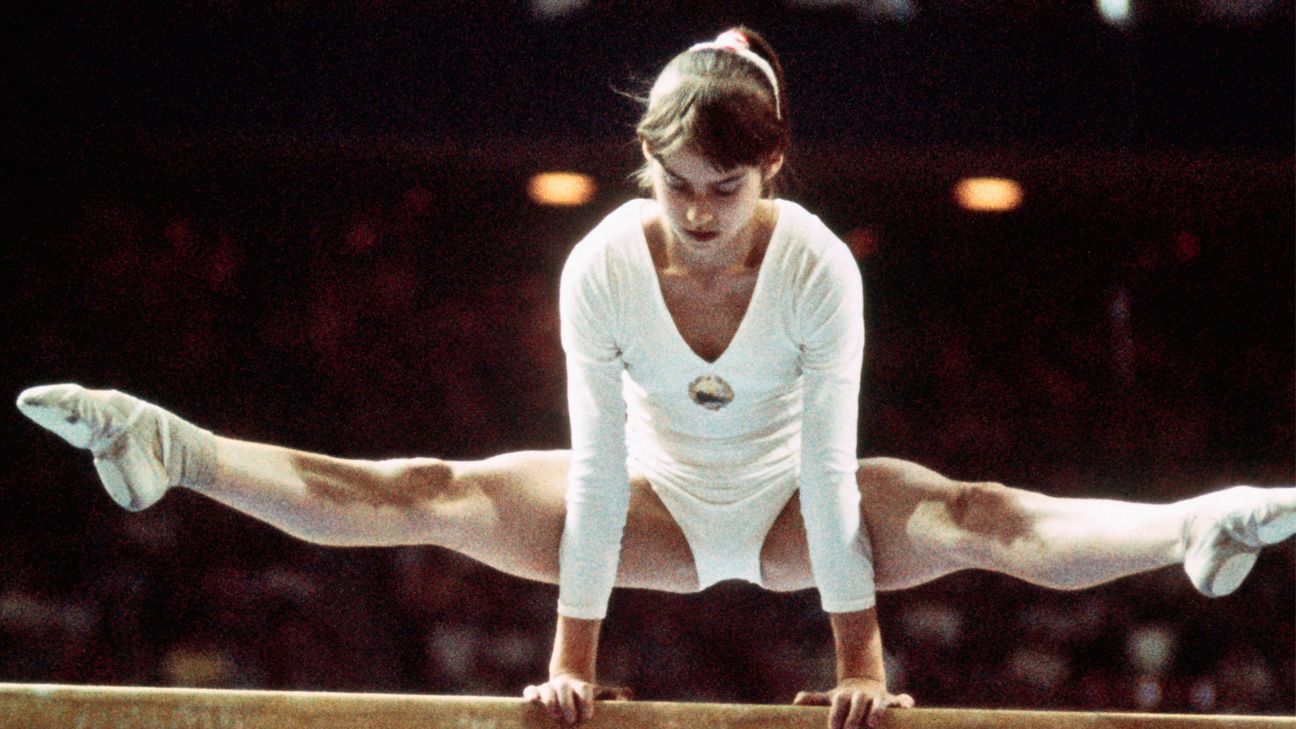Nadia Elena Comaneci is a gymnast who may be well-known all over the world. She was the first woman in Olympic gymnastics history to get a perfect score of 10.
At the 1976 Summer Olympics in Montreal, she won three gold medals. She also won two gold medals at the Moscow Olympics in 1980. This woman was also named one of the athletes of the century by the Laureus World Sports Academy in 2000.
Nadia Comaneci’s Net Worth in 2024
Celebrity Net Worth says that the Romanian dancer named Nadia Comaneci has a net worth of $10 million. Nadia has won five gold medals at the Olympics. At the 1976 Olympics, she was the first gymnast to ever get a perfect score of 10.0. He was born in Onesti, Romania, on November 12, 1961.
She was born to Gheorghe and Stefania Comaneci, and her brother Adrian is younger than her. The family was a member of the Orthodox Church in Romania. Due to her high energy level, her mother signed her up for gymnastics lessons when she was in kindergarten.

About Nadia Comaneci
Nadia Elena Comăneci Conner, better known as Nadia Comăneci, is a former Romanian gymnast who won five gold medals at the Olympics and is thought to be worth $12 million. At the 1976 Summer Olympics in Montreal, Nadia got the so-called “perfect 10.”
She began dancing in kindergarten when she was 6 years old. She was born on November 12, 1961, in Onesti, Romania. In 1969, she began playing for the team from her city.
She won the Romanian Nationals as the youngest gymnast, not long after putting in a lot of hours of training.Nadia Comaneci, a Romanian dancer who won five gold medals at the Olympics and is now retired, is thought to be worth $12 million as of 2024, as per reports of Wealthy Genius. Comaneci was the first gymnast to get an Olympic perfect score of 10.0.
She did it in 1976 when she was 14 years old.She went to the Summer Olympics in Montreal, Quebec, Canada, in 1976. After winning three Olympic gold medals, the 14-year-old athlete became famous all of a sudden. To make history, Nadia Comaneci was the first gymnast to get an exact 10.0 in the Olympics.From 1976 to 1977, she was named Personality of the Year by the BBC for outside sports.

Along with that, the press named her Female Athlete of the Year. Two moves on the uneven bars are named after her because she is so well-known in the gymnastics world. The first is called the “toe-on, half-turn to a back flip dismount,” and the second is called a “cast-to-straddle front flip.”Comaneci was admitted into the International Gymnastics Hall of Fame in 1993.
He also won the Olympic Order twice, in 1984 and 2004. There is no better honor the International Olympic Committee can give than that. ABC News and Ladies Home Journal named her one of the 100 most important women of the 20th century in 1999. The Laureus World Sports Academy named her one of the stars of the last 100 years in 2000.
Nadia Comeneci quit her job when she was 20, and her official retirement event took place in 1984. After all her hard work, she won five golds, three silvers, and one bronze at the Olympics.They have a son named Dylan together. Her husband is an American wrestler named Bart Conner.
She and her husband own the Bart Conner Gymnastics Academy together. She is also involved with the International Gymnast magazine, Perfect 10 Productions, Inc., and Grips, etc., a company that sells gymnastics equipment.
Nadia Comaneci Career
Bela Karolyi picked Comaneci to go to an experimental gymnastics school when he saw her doing cartwheels outside of school when she was six years old. At age 7, she started working with him and his wife, Marta.Many of the other students at her school had to live at the boarding school, but she could stay at home because she was from the town.
While she was only 9, Comaneci won the Romanian Nationals as the youngest gymnast ever. That same year, she joined her hometown team and went on to win the title. The next year, she went to her first international tournament and won her first title in all of the events.

In the following years, she kept competing in big junior gymnastics events, often winning and getting cold.At the European Women’s Artistic Gymnastics Championships in Norway in 1975, when she was 13, she won the all-around title and gold medals in every event except the floor exercise, where she came in second.
This was her first big international win. In the following year, she got 10s at the American Cup, just a few months before going to the 1976 Summer Olympics.During the Olympic Games in Montreal, Comaneci got seven perfect tens. Four of them were on the uneven bars, and three were on the beam. In the all-around, the uneven bars, and the balance beam, she won gold medals.
She was the youngest Olympic all-around winner ever, at just 14 years old, and the first Romanian gymnast to win the title.After her amazing showing at the Olympics, Comaneci continued to rule her sport. In 1977, she won back her European all-around crown. She had a hard year the next year, though, so the Romanian Gymnastics Federation sent her to train with new teachers in Bucharest.
During this time, she also grew quickly and added a few inches to her height. These new difficulties made her worse, and she came in fourth at the 1978 World Championships. She was able to go back to her old coaches after this victory, and soon after, she won her third straight European all-around title.
After that, she was chosen to go to the 1980 Summer Olympics in Moscow. She won two gold medals, one on the beam and one on the floor. She was the only gymnast to defend her beam gold medal at the Olympics. But the Romanian government didn’t like her teacher, Karolyi, because he spoke out against how Comaneci was scored during games.
Soon, the Romanian government made things hard for him and his wife. The next year, while on a tour with Comaneci called the “Nadia ’81” tour, the couple ran away to the United States. Comaneci quickly told her teacher that she did not want to defect, even though he had sneakily asked her.
Things began to change for her there, though, and the government kept a close eye on her because they thought she might run away.She did not take part in the 1984 Olympics; she watched them instead. Over the next few years, the government kept an eye on her and wouldn’t let her leave Romania except for a few places where she would be closely watched.

She escaped on the night of November 27, 1989, just a few weeks before the Romanian Revolution. She went through Hungary and Austria and then got on a plane to the United States. As soon as Comaneci got to the U.S., she decided to move to Oklahoma to be with her friend Bart Conner at his gymnastics school.
Conner was also an Olympic gymnast who won a gold medal. The two of them met a few times at different events over the years. Even though Comaneci isn’t competing anymore, she is still very involved in gymnastics and has taken on leadership roles. The Romanian Gymnastics Federation has named her honorary president, and she is also the country’s sports head.
She has also often been a part of news or commentary for later Olympic games. Her job was to carry the Olympic torch as part of the journey for the London 2012 Summer Olympics. There have also been several commercials with her during the games. She has also done a lot for several causes.
Conclusion
From a small town in Romania to become an Olympic star, Nadia Comaneci’s story is one of hard work, intelligence, and ground-breaking accomplishments. Her legacy goes beyond her Olympic medals; she has motivated many people to follow their dreams with passion and devotion.
Comaneci is still a symbol of success in gymnastics and a spokesperson for the sport. He continues to influence and motivate people today and in the future.
Make sure you’re well-versed in celebrities’ net value with Wortholino.

